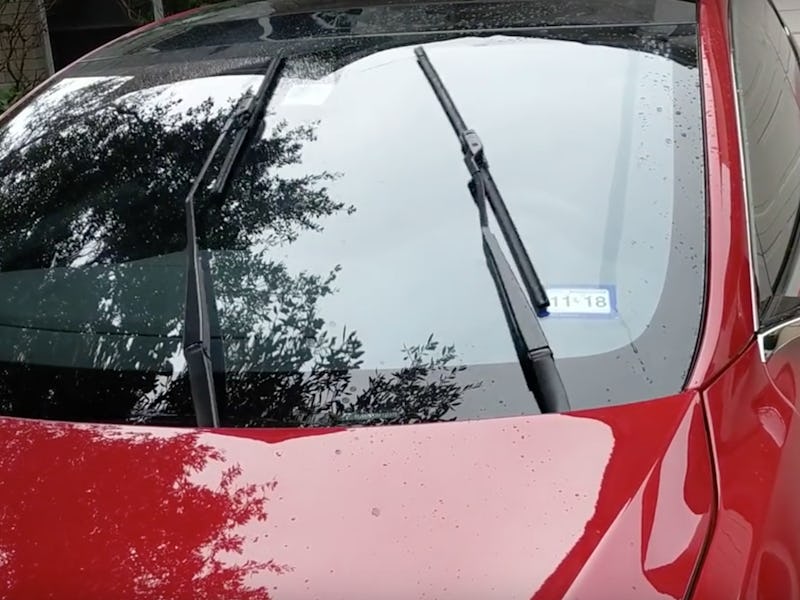
Tesla’s cars just keep getting smarter. On Wednesday, CEO Elon Musk shared a video of a new software update in action, which uses advanced artificial intelligence and the onboard Nvidia computer to activate the windshield wipers as soon as water hits the glass.
“Using a neural net to detect rain using cameras (no dedicated rain or sun sensors),” Musk said on his Twitter page. “Computers are very patient.”
Software update 8.1, released on Monday, brings a rain-sensing wiper system with two settings: one that activates the wipers when a large amount of rain falls, or one that reacts as soon as the computer detects water.
Okay, so it’s not the sort of super-intelligent A.I. that Musk has warned could enslave humanity, but Tesla’s update demonstrates how these new technologies can improve daily life by making simple, smart choices.
Watch the wipers in action, courtesy of YouTube user Arm Suwarnaratana, below.
This is the first time that rain-sensing wipers have reached Hardware 2 cars, the setup of computers and sensors included with every Tesla since October 2016. Older vehicles powered by the Mobileye EyeQ3 chip supported the feature through a dedicated rain sensor, something the newer vehicles lack.
Tesla has faced a series of hurdles to bring the features present on older cars to its newer models. The company parted ways with Mobileye soon after the first fatality occurred using the semi-autonomous Autopilot mode.
Tesla originally planned to move away from Mobileye chips by using its own system side-by-side, eventually removing Mobileye parts and continuing to develop its system into a fully autonomous driving solution. Musk told investors last February that Mobileye’s refusal meant Tesla had to “cross the rubicon” and ship its own, pared-down solution.
Tesla hasn’t given up on its self-driving car ambitions, though. Customers purchasing a new car still have the option to pay upfront for full autonomous driving. However, Musk said at the Hardware 2 launch that a Tesla would drive itself autonomously cross-country before the end of 2017, a deadline that came and went three days ago. As Tesla continues to work on bringing older features over to its newer vehicles, it could be a while before Hardware 2 starts to show its full capabilities.